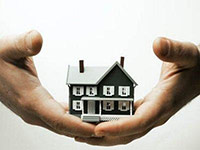- What could be the nuance
- Installation instructions
- Step 1 - Preparatory work
- Step 2 - Layout Walls
- Step 3 - Create a Strobe
- Step 4 - Mounting Pods
- Step 5 - Connecting Electricians
Most often, a socket block of 2, 3, 4 "electrical points" is installed in the kitchen and in the hall behind the TV. The horizontal or vertical panel of euro sockets is very convenient, because allows you to connect in one place the interacting group of home appliances, for example: TV, audio system and DVD player. Next, we will tell you how to install and connect the socket outlets in the house yourself!
What could be the nuance
To date, the walls in the house can be concrete, wood, brick or plasterboard. Because of this, the installation technology can have its own characteristics - you will shatter concrete in a panel house, or simply install roofing felts (external) on the surface for open wiring. Next, we briefly describe each of the installation options, but still you can learn in more detail about how to mount the box in a concrete, brick and plasterboard wall in the relevant article.
Installation instructions
To make it clear to you how to properly install and connect the block of sockets with your own hands, then we will provide step by step instructions from A to Z with photo examples and visual video lessons.
Step 1 - Preparatory work
First you need to decide where you want to put the outlet group in the room. If this is a kitchen, then it is better to place the socket block over the worktop, so that when you connect a multicooker, microwave oven and other kitchen appliances, there is enough cord length. In the living room or hall, it is best to install the product behind the TV so that the big screen can hide all the cords. If you decide to put a block of two or three outlets in the bathroom, consider the important rule - the distance from the water should be at least 0.6 meters and at the same time the case of electrical points should be waterproof. You can get more tips about this moment in the article - European standard outlet height . 

Also at this stage you should prepare a tool for wall shading for wiring and podrozetniki. If the wall is concrete or brick, use a punch with a special crown. For drywall also has its own nozzle for stroking. In addition, prepare the building level, marker and roulette.
Step 2 - Layout Walls
In fact, a very important stage on which the correctness of further installation and connection will depend. You need to put a markup on the surface under the installation of podozetnikov on the basis of how many electrical outlets will be in the unit. The first and very important rule - the distance between the centers of the receivers must be strictly 72 mm. If you allow an error, when installing a decorative cover, it may not fall into place. In addition, make sure that all round strokes are placed in the same horizontal or vertical plane. For this we recommend using the building level. 
When the walls are laid out, you can move on to the shaving.
Step 3 - Create a Strobe
At this stage, you must make footprints for embedded floorplanes. There is nothing complicated, the main thing is that there was a puncher with a suitable nozzle on hand. If you decide to install a socket block in a concrete or brick wall, first cut the circles with a crown, and then knock out the entire core with a chisel and hammer. Considered in detail the instructions for installing the socket block in the concrete in the video example below.
How to perform brick wall shading for the installation of a socket panel
If the walls in your apartment are covered with sheets of gypsum boards, then it is even simpler - using a perforator and a crown, you cut out round shafts according to the marking with the help of drywall.
Installation of glasses in a plasterboard partition
Step 4 - Mounting Pods
The next thing you need to do is to install a block of podozetnikov. To date, there are special plastic glasses that can be interconnected. To connect plug-ins is not difficult even for an electrician novice. 
In the brick and concrete walls you need to embed the glasses yourself with plaster mortar. Everything is simpler in drywall - podozetniki pressed to the sheet with special paws on the sides. Again, you can see the essence of the installation of flip-flops in the article we referred to at the beginning.
Step 5 - Connecting Electricians
When the solution hardens (this applies to the walls of concrete and brick), you can proceed to connect the indoor unit sockets to 220V with their own hands. Connecting several euro sockets is allowed by a loop from one input cable, if you do not connect very powerful household appliances, for example, an electric stove.
So, first of all, turn off the electricity on the apartment panel, and then connect the lead-in wires from the junction box to the first socket: phase, zero and ground. After that, make jumpers to connect the remaining outlets in the unit. Connection of a block of 3 or 4 sockets must be made according to this scheme: 
After you connect all the conductors to the corresponding terminals, you can fix the Euro-socket housings in the sockets and install the decorative cover.
Video installation instructions
How to quickly connect the triple socket panel to the mains?
Also read:



